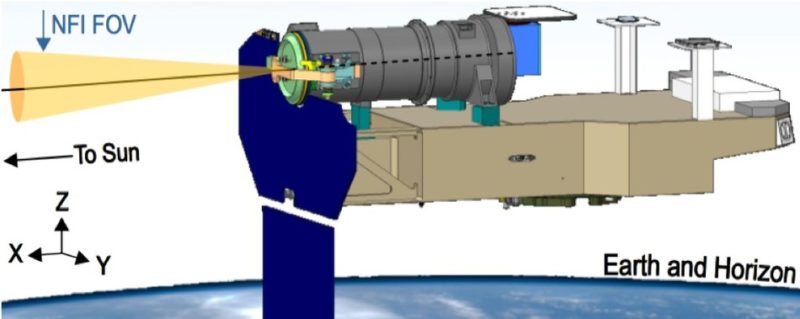Latest News
US Naval Research Laboratory, Southwest Research Institute Partner on NASA Mission

U.S. Naval Research Laboratory’s Narrow Field Imager shown on one of the four PUNCH micro-satellites. PUNCH will provide imaging of the solar wind from low Earth orbit. Work was funded by NASA. (Graphic courtesy of PUNCH Team/Southwest Research Institute)
U.S. Naval Research Laboratory researchers partnered with Southwest Research Institute (SwRI) to shine a light on the impact of the solar atmosphere on the interplanetary medium between the Earth and the Sun. According to NASA, “it’s a go” for the Polarimeter to Unify the Corona and Heliosphere (PUNCH) mission, which is a cooperative effort between SwRI and NRL. The mission seeks to spotlight the Sun’s outer corona. By studying this interplanetary medium, researchers gain a better understanding of how solar events impact Earth’s atmosphere and magnetic field.
Space-based observatories typically involve just one spacecraft, but PUNCH will consist of a constellation of four suitcase-sized microsatellites. From Low Earth Orbit (LEO), the vantage point will give researchers an unprecedented wide view of the solar wind in three dimensions. PUNCH will also leverage NASA’s ongoing Parker Solar Probe mission, which is currently orbiting the Sun closer than any previous spacecraft.
“This mission really has two focuses,” said Robin Colaninno, Ph.D., an astrophysicist with NRL’s Space Science Division. “Trying to look at the creation of the solar wind from the corona and then also looking at the propagation of the coronal mass ejections in the solar wind.”
Get the latest Via Satellite news!
Subscribe Now